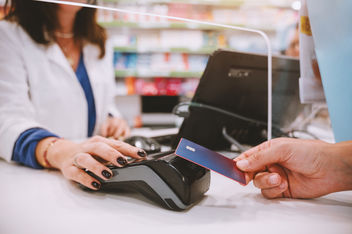What To Use Your Flexible Spending Account (FSA) On
December 12, 2023If you are enrolled in a flexible spending account (FSA), time is running out to utilize your funds for the year. You may be unsure of what you are able to spend these funds on so we're here to help make it easy for you.

The Inside Rx Blog
Get the Inside Scoop on tips & tricks that may help your family save on prescriptions!
Subscribe to stay up to date with the latest news and tips
As the year comes to a close, we want to remind you that time is running out to put your Flexible Spending Account (FSA) account to use. If you don’t, you could lose whatever’s left over in the account. That’s because FSA money operates on a “use-it-or-lose-it” scenario. You shouldn’t have to worry too much, since the expenses you could use your Flexible Spending Account on are plentiful.
Learn more about how a flexible spending account works and what you can spend your remaining FSA dollars on before the year ends.
What Is a Flexible Spending Account (FSA)?
Flexible Spending Accounts are limited to $3,050 per year per employer. For those who are married, spouses can also contribute the same amount, up to $3,050, into an FSA with their employer.
An FSA is a health savings account that lets you store pre-tax dollars so you can pay for certain out-of-pocket healthcare products and services. An FSA is often set up through your employer’s benefit plan if they offer one. Since you don’t pay taxes on the money you store in this account, it’s a good way to save on taxes for an amount you wouldn't have otherwise contributed. Employers will often make regular contributions to an FSA account. Ask a tax advisor about potential savings you could use with an FSA.
Although the money in an FSA usually has to be spent by the end of the calendar year, many employees offer a grace period or a rollover amount. For instance, some employers will allow you a two-and-a-half month grace period after December 31st to use up the rest of your funds. If your employer offers a rollover, the amount you can rollover changes each year. In 2024, the IRS limit you are able to roll over from 2023 is up to $610. This amount will increase to $640 for 2024-2025. Your employer might offer either a grace period or a rollover amount, but not both. It’s also not required for them to offer either option at all.
Still, it’s important to plan how you’ll use your FSA dollars accordingly. This way, you’re not losing out on the maximum benefits of an FSA.

GLP-1s in Employee Health Plans: Cost Forecasts & Mitigation Tactics

How to Access Affordable GLP-1 Medications: Real Solutions for Lower Prices

How to Audit Your Prescription Benefits: Essential Year-End Checklist 2025

Black Friday for Health: Prescription Discounts You Didn’t Know Existed
How to Use an FSA
To use your flexible spending account, you can submit a claim to the FSA through your employer. You may have to provide proof of the medical expense. You may also have to provide a statement that shows that the expense is not covered by your insurance plan. After submitting your claim, you’ll receive a reimbursement. Talk to your employer about how to use your specific FSA.
What to Use Your Flexible Spending Account Funds on
FSA money can be used for a variety of medical expenses that aren’t typically covered by your health plan. These expenses could include:
- Deductible and copayments
- Prescription medications, over-the-counter (OTC) medications and insulin
- Diabetic supplies, such as blood sugar test kits
- Annual eye exams, prescription eyeglasses or sunglasses, contact lenses, eye drops and saline solution for contact lenses
- Dental visits and dental treatments, such as dental exams, fillings and root canals
- Complementary medical procedures, such as chiropractor and acupuncture sessions
- Smoking cessation products, like nicotine patches
- Vaccines and immunizations
- Feminine hygiene products, birth control pills and condoms
- Breast pumps
- Sunscreen
- Weight loss programs (to treat a condition diagnosed by a physician)
- Medical supplies, such as thermometers, bandages and crutches
A list of acceptable expenses can be found on the IRS Medical and Dental Expenses page.
Atorvastatin Calcium
$ 7.53Pantoprazole Sodium
$ 8.04Saving with Inside Rx
Even with an FSA, you could take advantage of savings offers, especially on your prescription medications. With a discount card like one from Inside Rx, you may be able to save up to 80% on your brand and generic prescription medications. To see if you can save and unlock savings, simply search for your medication at InsideRx.com and enter your zip code to compare lowest prices at the pharmacies closest to you. The Inside Rx savings card is accepted at nearly 60,000 pharmacies nationwide. Saving on your prescriptions, even when using an FSA, allows you to use the remainder of your account on other items as mentioned above, to get you the most bang for your buck!
Check with your employer on the specifics of the FSA and health plan available to you to see what eligible purchases may be covered.